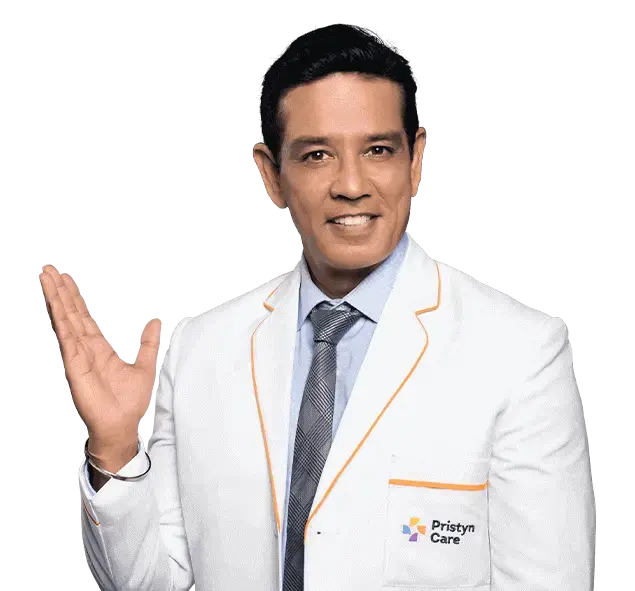
Select City
Understanding the difference between traditional and laser cataract surgery is important to make informed decisions about the surgical approach, considering factors like precision, recovery time, potential complications, and overall effectiveness in achieving desired visual outcomes. To know more about both cataract removal surgeries. You can also fill in the form and speak to our expert ophthalmologists.
Understanding the difference between traditional and laser cataract surgery is important to make ... Read More




Free Consultation

Free Cab Facility

No-Cost EMI

Support in Insurance Claim

1-day Hospitalization

USFDA-Approved Procedure
Choose Your City
It help us to find the best doctors near you.
Bangalore
Chennai
Delhi
Hyderabad
Mumbai
Pune
Delhi
Gurgaon
Noida
Ahmedabad
Bangalore
Cataract surgery is a frequently performed, safe procedure in India, aimed at replacing the clouded lens of your eye with an artificial one, known as an intraocular lens (IOL). This restores your clear vision. There are two main methods of performing this operation:
Both approaches have proven effective. However, laser-assisted surgery can provide added precision. The choice between the two often hinges on individual patient needs and the surgeon’s proficiency.

Fill details to get actual cost
Traditional cataract surgery, also known as phacoemulsification, is a tried and tested method to treat clouded eyesight. Let’s break down this procedure into simple steps:
Though traditional cataract surgery is effective, do bear in mind it might not provide precision on par with laser-assisted surgeries. Laser technology may lead to quicker healing and potentially fewer complications.
Laser cataract surgery, a procedure that uses a specialised femtosecond laser, incorporates the following steps:
Laser cataract surgery enhances precision but may not be necessary for all patients due to its higher cost compared with conventional phacoemulsification procedures.
Yes, both traditional and laser cataract surgeries are deemed safe with a minimal risk of complications. These procedures are routinely performed by ophthalmologists and eye surgeons yielding high success rates.
When comparing traditional versus laser cataract surgery, both methods uphold safety standards. However, laser-assisted surgery is often regarded as safer due to its enhanced accuracy and precision. Furthermore, it reduces potential complications and promotes quicker recovery times.
Diet & Lifestyle Consultation
Post-Surgery Free Follow-Up
Free Cab Facility

24*7 Patient Support
Traditional cataract surgery and laser cataract surgery both have their advantages and limitations. Here are some key points about each method:
In comparison, both traditional and laser surgeries are safe methods for treating cataracts. However, due to higher accuracy, laser-assisted surgery often provides quicker recovery times and reduces the risk of complications.
When it comes to cataract surgeries, you might wonder about pain and discomfort. Both traditional and laser cataract surgeries are usually painless procedures but there are differences in the discomfort levels:
Both traditional and laser cataract surgeries are generally painless, but laser surgery is considered more comfortable and results in faster recovery times.
The recovery time for traditional cataract surgery and laser cataract surgery is generally similar, with both procedures taking around 3 months to fully recover. However, there are some differences in the initial recovery period:
The cost of cataract surgery varies based on the method chosen, with traditional surgery usually being more affordable than its laser counterpart. Here’s a comparative analysis:
Traditional Cataract Surgery:
Laser Cataract Surgery:
When dealing with cataracts, you essentially have two choices i.e. traditional surgery or the more technologically advanced laser surgery. Each has its advantages and disadvantages.
Pros:
Cons:
Pros:
Cons:
Here is a comparison table between traditional cataract surgery and laser cataract surgery:
| Parameter | Traditional Cataract Surgery | Laser Cataract Surgery |
| Method | Manual instruments and ultrasound waves | Femtosecond laser technology |
| Precision | Good | High |
| Safety | Generally safe | Marginally safer |
| Best For | General cataract patients | Patients with astigmatism and advanced cataracts |
| Cost | Lower and usually covered by insurance | Higher and may not be covered by all insurance |
| Complications | Higher risk of complications such as corneal damage and posterior capsular tears | Lower risk of complications due to precision and automation |
| Recovery Period | Fast, but may take a few weeks for a full recovery | Quick, with minimal inflammation and faster recovery |
Typically, local anaesthesia in the form of eye drops or an injection around the eye is used to numb the area during traditional cataract surgery.
Traditional cataract surgery does not correct astigmatism or refractive errors. Patients may still require glasses or contacts post-surgery.
Laser cataract surgery offers more precision in creating incisions and breaking up the cataract, potentially leading to improved outcomes and faster recovery times.
In traditional surgery, mono-focal IOLs are most commonly used, which correct vision at one distance (usually distance vision), requiring glasses for near or intermediate vision.
Yes, traditional cataract surgery can often be performed even if you have other eye conditions, though your ophthalmologist will assess your situation.
The results of traditional cataract surgery are generally permanent, as the cloudy lens is replaced with a clear IOL that does not degrade over time.
After surgery, patients are often advised to avoid strenuous activities and heavy lifting for a few weeks to minimize the risk of complications.
Yes, laser cataract surgery can be used to create precise incisions that correct astigmatism. Additionally, advanced IOLs used in conjunction with laser surgery can correct astigmatism and reduce the need for glasses.
While laser cataract surgery can benefit many patients, not everyone may be a candidate. Factors like the severity of cataracts, corneal health, and overall eye condition influence candidacy, which your eye doctor can assess.
Recovery times for laser cataract surgery are generally similar to traditional surgery. Most patients experience improved vision within a few days, with complete recovery typically within a few weeks.
HARISH KAPASI
Recommends
Great unimaginable experience, Mansi had taken lots of effort and care of us during the whole process. Surely recommending my experience to lot many people.
Rukmini kadam
Recommends
I would like to sincerely appreciate Miss. Muskan Gulati. She helped us beyond her limits. Superb support from her.
Narender
Recommends
No comments it's my first time with prestine I am happy
Kanakarao
Recommends
Super
Suresh Prasad Singh
Recommends
Having a very good and helping attitude of the doctor giving great soothing effect to the patient.Very talented and profetional..
.svg)
.svg)